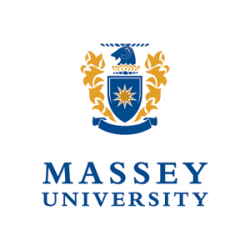
Information Maps: Supporting Students Through Their Research and Writing Processes
Status
Completed: 1 June 2009
Project Details
A project, undertaken by Massey University, to explore how imaps can be used to enhance information literacy, reduce plagiarism and enhance feedback on students’ research and writing processes.
Aims:
The main aims of the imap project were to:
- enable students to understand the research and writing process
- assist students to engage fully and appropriately with secondary source material (for example, critiquing texts and considering how their own ideas related to those of other sources).
Methodology:
The project's methodology included:
- carrying out an evaluation of the process over three semesters
- gathering evidence through a range of data collection methods such as reflective journals, questionnaires, student and tutor interviews.
Team

Associate Professor Lisa Emerson
Massey University
Dr Sharon Stevens
Massey University
Dr John Muirhead
Massey UniversityStatus
Funding
$3,000.00 (excl GST)
Key Findings
The research findings showed that students benefited from the use of the imap in a number of ways:
- They helped students to: articulate the value of a research source; establish their relationship with a research source; and follow an appropriate search strategy.
- They supported students through the writing process, and enabled them to articulate an effective writing process.
- They provided invaluable information to tutors at a formative stage, allowing them to instantly assess a student’s research strategy and provide formative feedback to students.
- They were useful in group projects at the formative stage, as discussion points for groups in relation to process and secondary source material. They were also useful to markers of group projects, to show how different group members engaged with secondary source material.
- The visual aspect of the imap was perhaps one of the greatest benefits to students. A majority engaged creatively with the visual aspect and showed pride in the quality of their work.
Key Recommendations
The key recommendations from the project, about using imaps to promote students’ research and writing process, included:
Overcoming concerns about the quality of students’ research | Imaps could be included in any course that is concerned about the quality of students’ research strategies, and where students need to learn how to interact with other sources.
Using imaps as part of the assessment strategy | When using imaps as part of the assessment strategy, take a broad, creative approach to what an imap might look like, so that students are allowed maximum creativity in the process. It is beneficial to provide a wide range of models to students, to assure them that a wide range of approaches are appropriate.
Items that should be included in the imap | It will also be beneficial to provide students with a list of items that should be included in the imap, with emphasis on the idea that other items may be included.
Present a real representation of the process | It is important to emphasise to students that they need to present a real (as opposed to idealised) representation of their process.
Imaps as part of formative and summative assessment process | Ideally imaps should be used initially as part of the formative assessment process. This allows students to then correct any errors in their information search strategy. They can also be used successfully as part of summative assessment, to reward effective process as well as effective product.
A Guide prepared by Lisa Emerson, Sharon Stevens and John Muirhead.
(PDF, 2.04MB, 15-pages).
- 1 June 2009